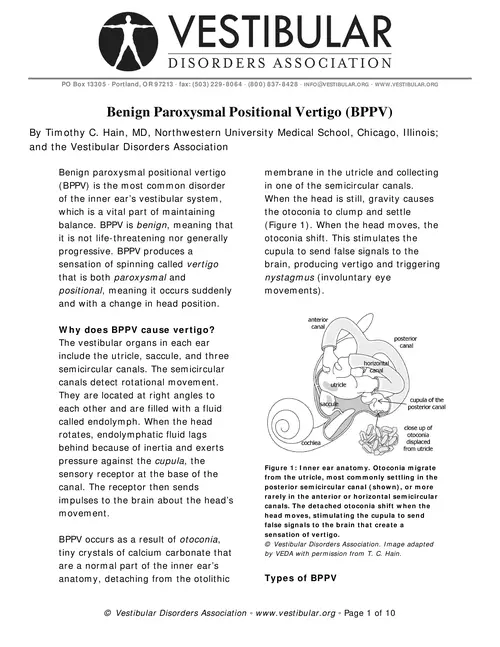
Benign Paroxysmal Positional Vertigo (BPPV) - Vestibular Disorders
patient has PC-BPPV, during the Dix-Hallpike maneuver testing was monitored with video-oculography to prevent the patient from using visual fixation to
adsPart of the document
Benign paroxysmal positional vertigo (BPPV) is the most common disorder of the inner ear's vestibular system, which is a vital part of maintaining balance. BPPV is benign, meaning that it is not life-threatening nor generally progressive. BPPV produces a sensation of spinning called vertigo that is both paroxysmal and positional, meaning it occurs suddenly and with a change in head position.
Why does BPPV cause vertigo? The vestibular organs in each ear include the utricle, saccule, and three semicircular canals. The semicircular canals detect rotational movement. They are located at right angles to each other and are filled with a fluid called endolymph. When the head rotates, endolymphatic fluid lags behind because of inertia and exerts pressure against the cupula, the sensory receptor at the base of the canal. The receptor then sends impulses to the brain about the head's movement.
BPPV occurs as a result of otoconia, tiny crystals of calcium carbonate that are a normal part of the inner ear's anatomy, detaching from the otolithic membrane in the utricle and collecting in one of the semicircular canals. When the head is still, gravity causes the otoconia to clump and settle (Figure 1). When the head moves, the otoconia shift. This stimulates the cupula to send false signals to the brain, producing vertigo and triggering nystagmus (involuntary eye movements).


